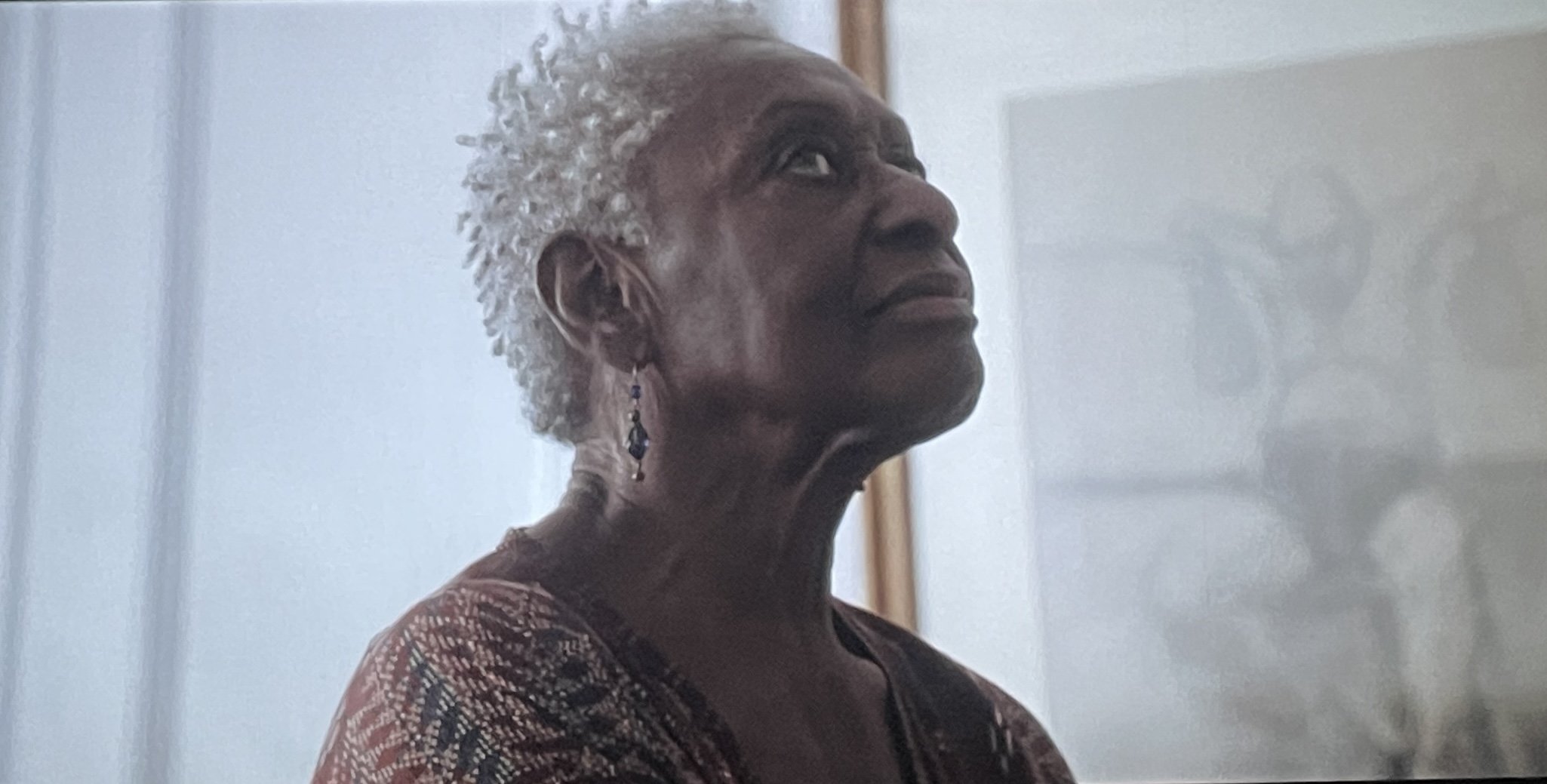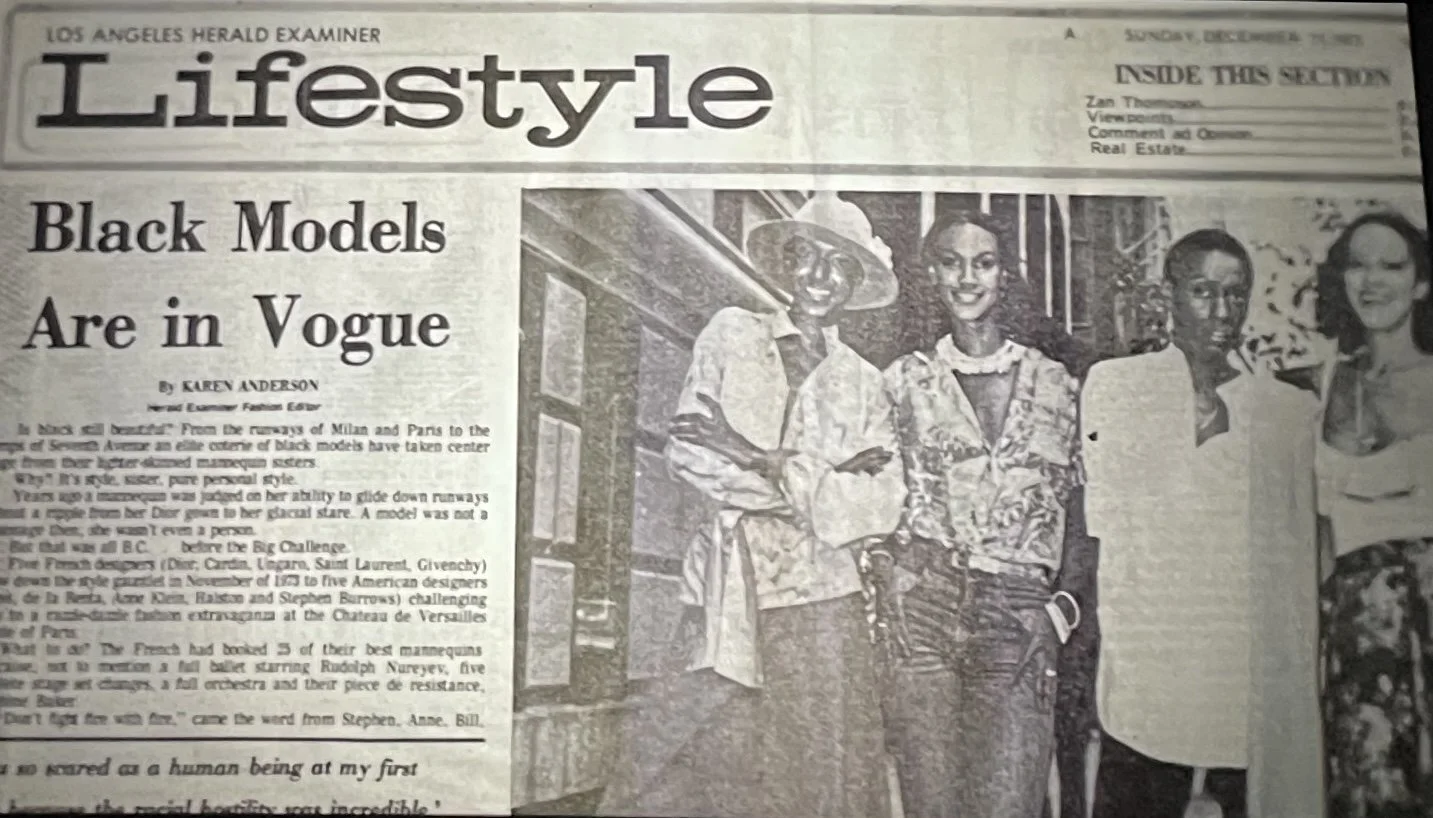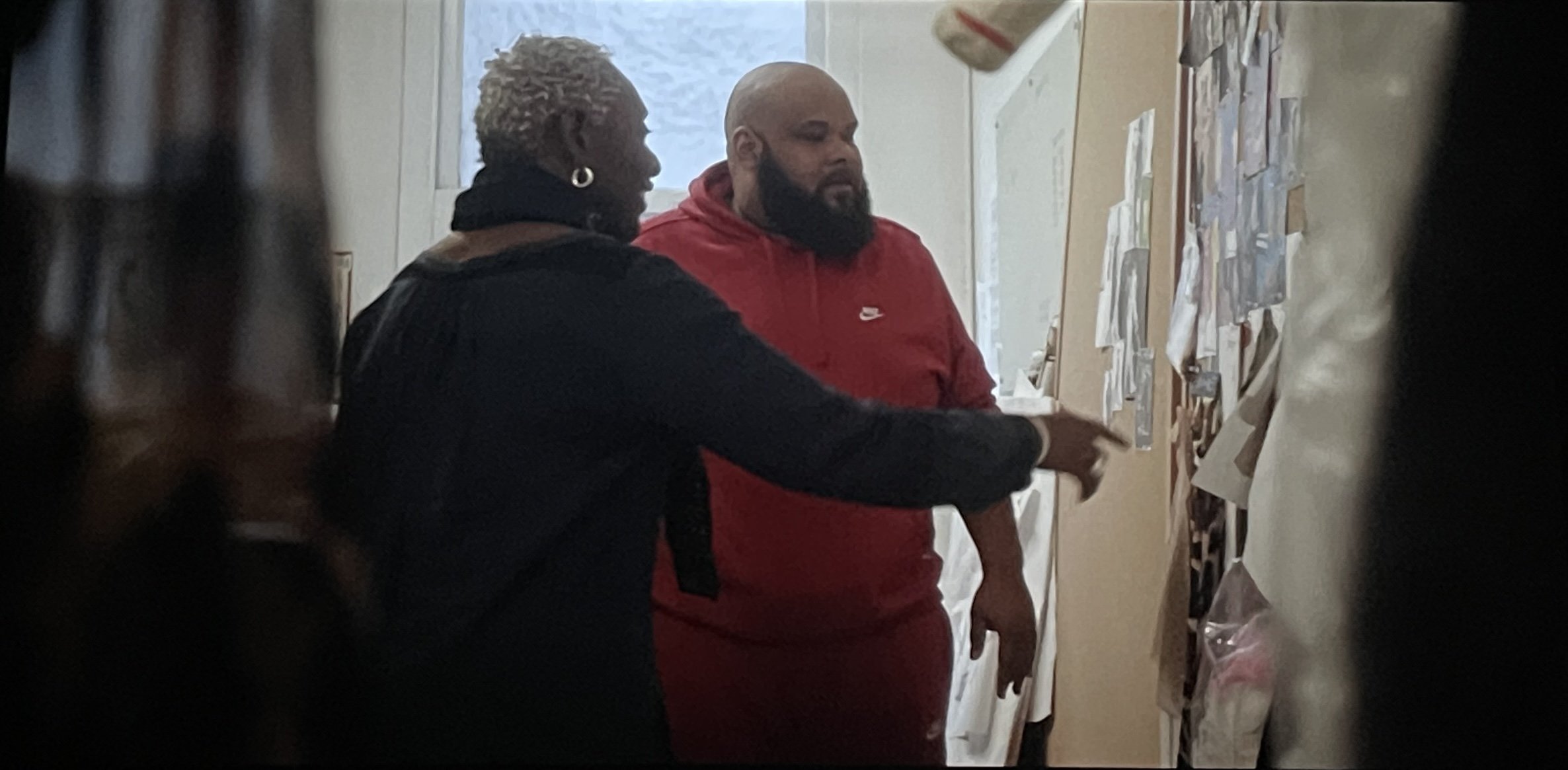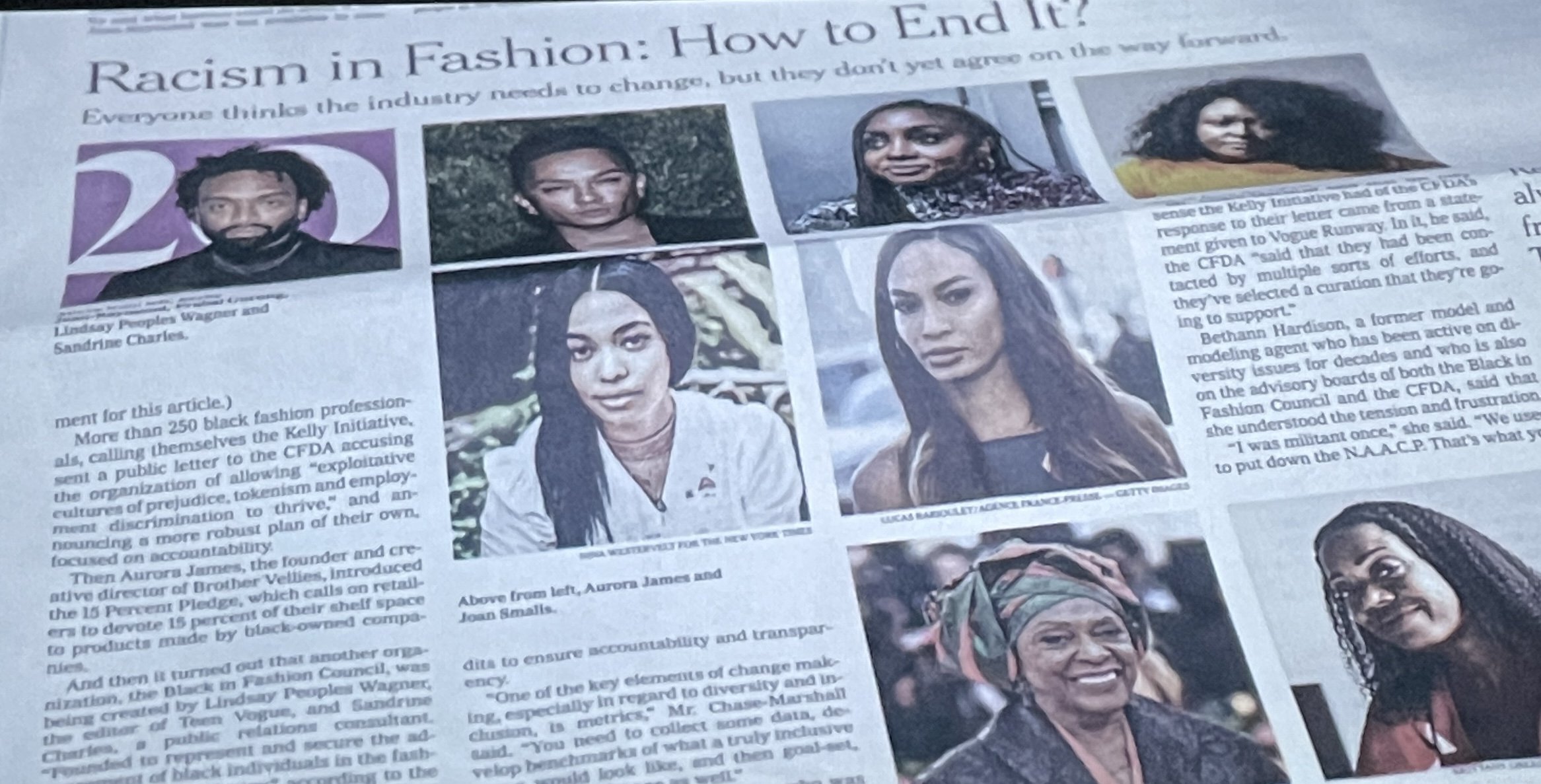Invisible Beauty Review: The Joys and Perils of Being a Diversity Advocate
A new documentary honors Bethann Hardison’s legacy of championing people of color.
Invisible Beauty/Photo by NYCXCLOTHES
In 1973, at the Battle of Versailles—a well-publicized event that pitted French and American designers against each other, a startling number of Black models (most notably, the iconic Bethann Hardison) walked the runways of American luminaries such as Stephen Burrows, Bill Blass and Halston. There were ten of them, a first-of-its-kind moment of representation that firmly established Black talent in the fashion discourse. Before this, when Paco Rabanne and Yves Saint Laurent became the first high-profile designers to employ Black models in the 1960s, doing so was considered a political act in France. Things should have continued on an upward trajectory, yet in the years that followed, Black representation remained sparse—if at all existent, in the US editorials and on the runways of Paris.
Two decades later, Ralph Lauren—the Bronx-born tycoon who successfully monetized our desire for status—hired his first Black model (Tyson Beckford) 26 years after launching his empire in 1967. There again, Hardison was at work behind the scenes. That same decade, Prada, Chanel, Versace and a host of luxury brands made headlines for only casting thin, white models from Eastern Europe in their shows. That decision reverted years of advocacy for Black representation, which Hardison had led the charge in.
“Invisible Beauty, a new documentary honoring Hardison’s legacy of championing people of color, aptly captures the joys and perils of being a diversity advocate.”
Invisible Beauty/Photo by NYCXCLOTHES
Invisible Beauty, a new documentary honoring Hardison’s legacy of championing people of color, aptly captures the joys and perils of being a diversity advocate.
Hardison was born in Bed-Stuy, Brooklyn in 1942 and enjoyed a latchkey upbringing under mostly her mother and grandmother. As a kid, she was confident, competitive and proficient at many things—from tap dancing and running track to producing musicals and cheerleading (she was the first Black cheerleader at George W. Wingate High School). Armed with tenacity and a go-getter attitude, Hardison went on to pursue a career in the Garment District—first holding a position at a custom button factory and eventually, a junior dress company owned by sister-duo Ruth Manchester and Sylvia Courtney, where she learned about the garment business. It was there that fashion designer Willi Smith discovered her, one day on the street, and asked her to model for him. She became his muse; he introduced her to photographer Bruce Weber and the rest was history.
As a model, Hardison didn’t fit the traditional definition of beauty. She had an athletic build and a face deemed “suitable” for androgynous campaigns. Hardison did not let that stop her, but there was an experience that made her doubt herself. At her first Chester Weinberg runway show, the audience practically booed when she stepped on stage. She recounted that they couldn’t hold their heads up to look at her. “It was just that I was a different type of model,” Hardison said. “That’s not what brown models looked like then; they were a little bit more sophisticated, and I was more edgy.” All I wanted to do was go to the bathroom and hide, she added.
Bethann As a Child/Photo by NYCXCLOTHES
Bethann Hardison at the CFDA 2021 Awards/Photo by NYCXCLOTHES
“In the fight for diversity and inclusion, progress remains an ever-elusive, immeasurable thing.”
But Hardison is not one to hide. She continued apace, modeling for top designers like Claude Montana, Kenzo, and Issey Miyake when he first came to Paris. Her historic role in the Battle of Versailles marked the point where her story truly began. Hardison took on a new role in 1984 as the founder of Bethann Management modeling agency. Her first big win came with the discovery of Beckford and his subsequent 5-year contract with Ralph Lauren. Since that moment, Beckford has helped elevate and validate Black consumers by making them part of Lauren’s American Dream narrative. He has modeled polo shirts, classic button-downs, blazers and a host of preppy outfits in various (traditionally white) settings such as ski resorts, ranches, private beaches, yachts, and more. "The advertisers were not reflecting their consumers," Hardison told POPSUGAR. "You never saw a Black guy or Black girl driving a car. In those days, the mid-'90s, you didn't see any of that. It was important that [the Black talent] is not always a housekeeper or domestic…And that's what we had to change.”
“You never saw a Black guy or Black girl driving a car. In those days, the mid-‘90s, you didn’t see any of that. It was important that [the Black talent] is not always a housekeeper or domestic…And that’s what we had to change.”
Now 80 years old, Hardison remains committed to the battle, which she acknowledges will never be over. Her long list of accomplishments continue with the launch of Black Girls Coalition with Iman in 1988; her active role in the making of the all-Black July 2008 Italian Vogue issue; the launch of the Diversity Coalition in 2013; the game-changing letter she wrote to WWD and sent to the four councils (in New York, London, Milan and Paris) in 2013, following a long streak of Black exclusion at Fashion Week. Last but certainly not least, she was appointed to CFDA's board of directors and began serving as Gucci’s executive advisor for global equity and cultural engagement in 2020.
Bethann Hardison and Sergio Hudson/Photo by NYCXCLOTHES
“If you can name more than one Black designer in the New York Fashion Week calendar today, it’s thanks to Hardison.”
In the fight for diversity and inclusion, progress remains an ever-elusive, immeasurable thing. The aftermath of George Floyd’s killing is the most recent reminder. Following the public support offered to Black creators and business owners, the numerous anti-racism pledges, and the many squares that populated Instagram feeds, nothing happened. The establishment moved on and it was back to business as usual. It all played out like a cliché movie with a bad ending. Hardison is well aware of the performative nature of the industry, and this realization prompts her to say that in order for things to really change, “Activism has to remain active.”
Still, we owe much of the progress visible in fashion today to Hardison’s decades of activism which sparked industry-wide reform. If you can name more than one Black designer in the New York Fashion Week calendar today, it’s thanks to Hardison (fun fact: she mentored Sergio Hudson!) If you can think of more than one Black model on today’s fashion runways, it’s thanks to Hardison. If more Black women are now editors-in-chief of leading glossies, it’s thanks to Hardison. We may continue to encounter setbacks, but Hardison has changed the industry forever and empowered generations of Black men and women. There’s no going back from that.
Invisible Beauty/Photo by NYCXCLOTHES





